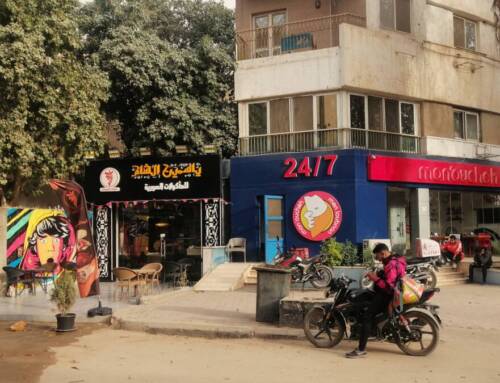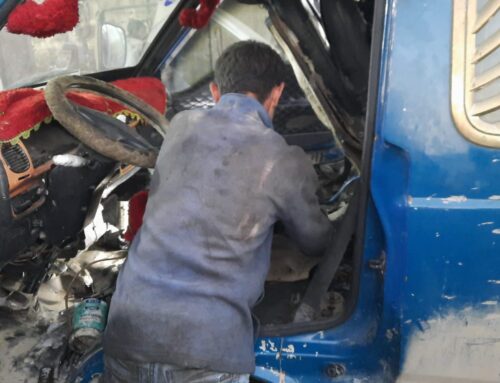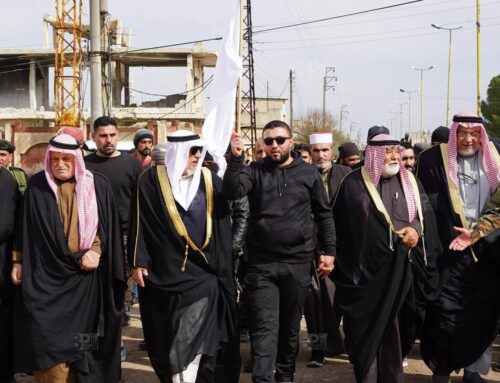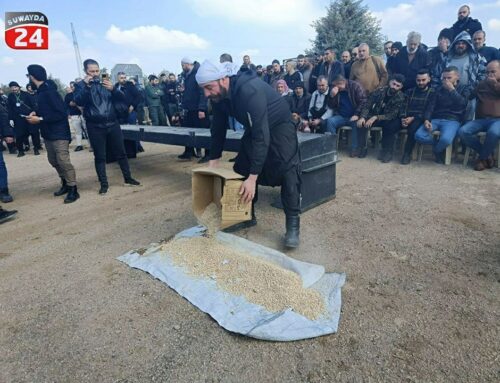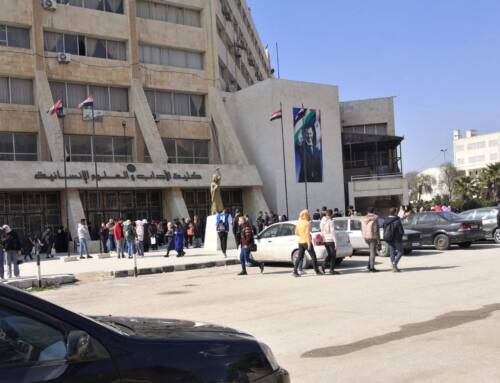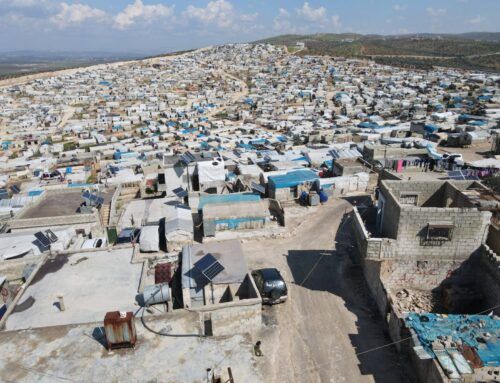Al-Hasakah church another casualty of Islamic State
April 15, 2015 Arabic-language news outlets reported in early April […]
15 April 2015
April 15, 2015
Arabic-language news outlets reported in early April that the Islamic Sate had blown up the Church of the Virgin Mary in the Al-Hasakah village of Tel Nasri. Unlike its conduct in previous operations, IS has not released an official statement claiming responsibility for destroying the Christian site.
“The truth [concerning who blew up the church] has been lost between accusations directed at both the regime and IS,” Siraj a-Din al-Haskawi, the alias of a local citizen journalist and member of the Syrian Revolution Coordinators Union, tells Syria Direct’s Ammar Hamou.
What is clear is that the Islamic State has worked to destroy Christian heritage across Al-Hasakah, demolishing the Qabr Shamia and Tel Jazira churches.
The Islamic State’s regularly takes over Christian and Islamic religious sites “as points of influence and control,” al-Haskawi says, “and that action is itself a violation of religious sanctity.”
Q: Where is the village of Tel Nasri located, who controls it and who are its residents?
Tel Nasri is one of the most famous of Al-Hasakah’s 700 hills. It is located five kilometers south of Tel Tamar. Most of the town’s residents are Assyrian Christians.
Tel Nasri in particular, and Tel Tamar in general, were under the control of local Christian militias called the “Al-Khabur Guard Council,” an Assyrian group formed with support from the churches and expatriate Syrians. This group was neutral concerning the war. Its purpose was simply to protect the Assyrian villages.
But the entrance of the Kurdish People’s Protection Units (YPG) into the area sparked a conflict and pushed the Islamic State to storm the Tel Tamar countryside, including Tel Nasri, so Tel Nasri became, along with a number of other Assyrian Arab villages, under IS control.

Q: In your opinion, who is responsible for destroying the church, and what were the motivations behind that?
The church truly was blown up. But the truth has been lost between accusations directed at both the regime and IS.
IS is the most prominent to be accused of the operation, and it did not deny the accusations but at the same time did not formally claim responsibility for the operation on its media platforms and pages.
The regime has also been accused of hitting the church with barrel bombs. What makes things muddy is the fact that the regime has previously bombed areas with churches. After Ras al-Ain was liberated [fell into rebel hands], the regime bombed the village’s churches. Before that, in 2013, the regime bombed the church of Tel Nasri and destroyed parts of it, and a child named Ninus Usha (14 years old) was killed.
Q: Did IS claim responsibility for the explosion, and has it conducted similar operations against Christian religious centers, or other minority religious sites in Al-Hasakah?
As I said before, the Islamic State did not officially take responsibility for the operation. But taking religious sites as points of influence and control, that action is itself a violation of religious sanctity. The lack of an announcement does not explain away its role or its inclination to do things like what happened to the church.
In Al-Hasakah there are two main religions, an Islamic majority and Christian minority.
Other violations similar to the church explosion have not been recorded.
Q: Does IS control Christian-inhabited areas? How are they treated?
To be sure there is a number, albeit a small number, of Christians who remained in the areas under IS control and accepted the jizya tax that IS imposed on them. I know Abu Ashur, the owner of a shop that sells home goods in the city of Shadadi, an IS headquarters and center of power, who is living his life.
As for the Christians living in areas where clashes are ongoing, they faced worse luck in terms of the forced displacement they were exposed to. But their suffering was dealt with locally, with the support and sponsorship of several parties including the regime. But I need to mention that there are Christians whom IS kidnapped two months ago when they took Tel Tamar, whom they have not returned until now.
Q: Pictures were published previously that showed the arrival of money paid by Christians under IS control, what’s known as the jizya. What does IS give them in return for the jizya?
Christians in Tel Temar paid the jizya more than a year ago to IS. In exchange, the Assyrians remained in control of their villages under the name “The Al-Khabur Guard Council.” This did not happen in other villages.
Q: What is the state of Islamic religious centers under IS control?
The Islamic religious sites are not any better off than the Christian ones. The Islamic street in Al-Hasakah is divided into three religious schools of thought. One of them is Sufism, a school that in the Islamic State’s view contains heretical doctrine that violates Islam. This pushed IS to destroy Sufi shrines. They planted explosives in the Tomb of a-Sheikh Abdul Aziz, which was called the Abdul Aziz Mountain in celebration of him.
They removed the Tomb of a-Sheikh Namis, and destroyed the school and center of the al-Khaznuwiya mosque.
The weirdest thing IS has done recently to Muslims is record the attendance of those who pray and attend mosques, imposing penance on those who are absent without an appropriate reason given to the Hisbeh.
Q: It’s well known that Muslims, and especially Sunni Muslims, have quite a variety of ideas and opinions. Do we see this variety in areas under IS control?
IS tries to remove any competitor or anyone who violates its program. The organization has exploited religion to achieve the caliphate that it hopes for.
From a military standpoint, IS fought the other Islamic organizations like Ahrar a-Sham and Jabhat a-Nusra that were located in the areas under its control.
For more from Syria Direct, like us on Facebook or follow us on Twitter.


